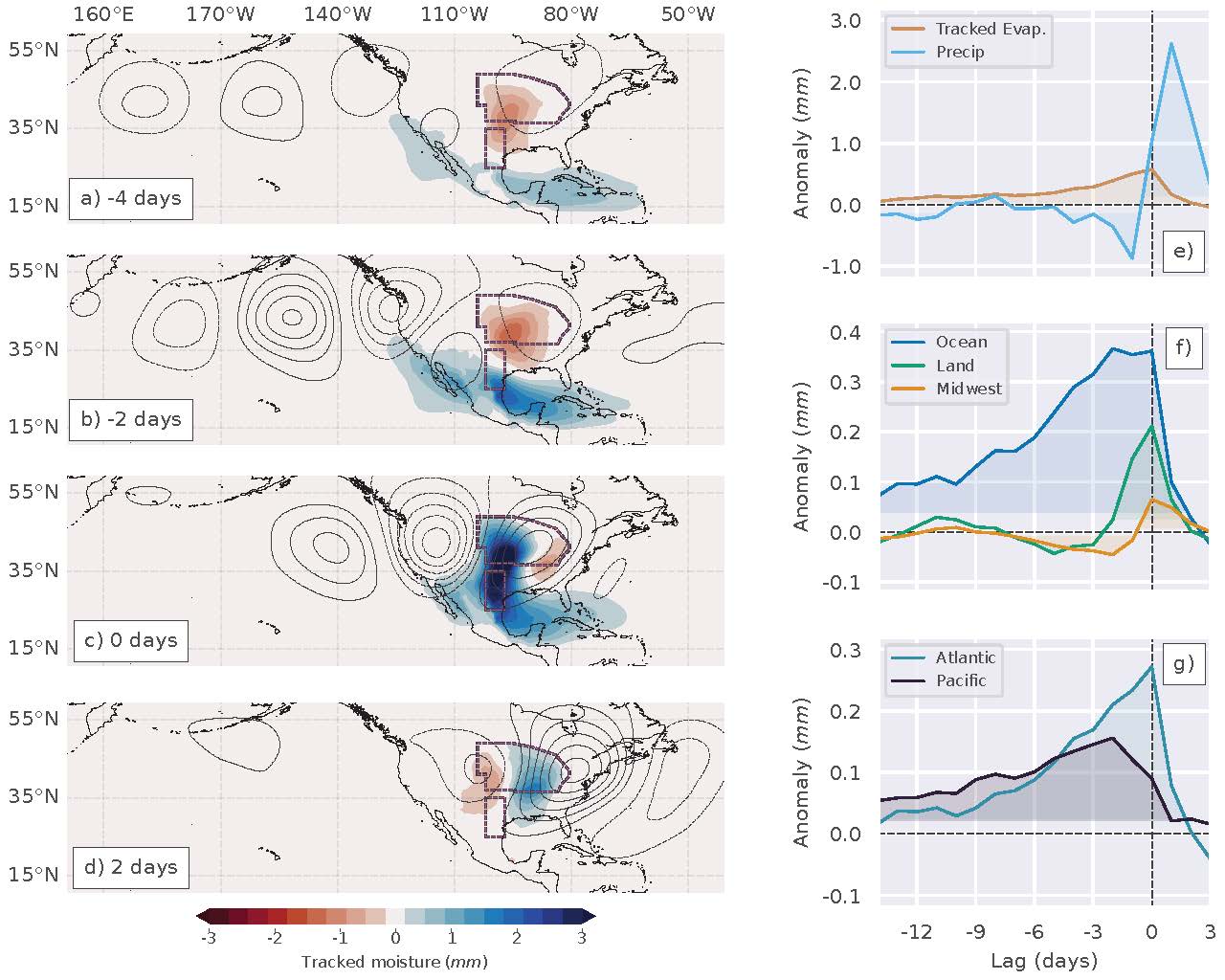Carr, T., & Ummenhofer, C. C. (2024). Impact of atmospheric circulation variability on U.S. Midwest moisture sources. Journal of Climate, 37, 59-75. https://doi.org/10.1175/JCLI-D-23-0178.1

Estimates of future changes in precipitation over land are poorly constrained owing to uncertainty about changes in atmospheric circulation and specific humidity over land. Recent work suggests one way to better-constrain these land precipitation estimates is to consider humidity changes over the land’s oceanic “moisture sources”, as future projections of humidity are more robust over the ocean than over land. As a first step to imposing such an ocean-based constraint, we estimate how much moisture from U.S. Midwest rainfall events originates from oceanic vs. land sources using an atmospheric moisture tracking model. We find that on daily timescales, almost all anomalous rainfall in the Midwest originates over the ocean. This is shown in the above figure, where we analyze a “composite” rainfall event (averaging over ~600 individual events from 1979-2020). Read from top-to-bottom, Panels. a-d show tracked moisture (blue colors) traveling from the Gulf of Mexico and Caribbean Sea northwards to the Midwest as an atmospheric Rossby wave propagates from west to east across the continent (open contours show geopotential height at 200 hPa). Panel e shows the Midwest precipitation anomaly as a function of time (blue curve) along with the global-integral of tracked evaporation (orange curve, representing evaporation which contributes to subsequent precipitation in the Midwest). Panel f shows how much of the tracked evaporation occurs over the ocean (blue curve), over land (green curve), and within the Midwest (orange curve). Finally, Panel g shows how much of the oceanic contribution originates from the Atlantic vs. the Pacific Oceans.
